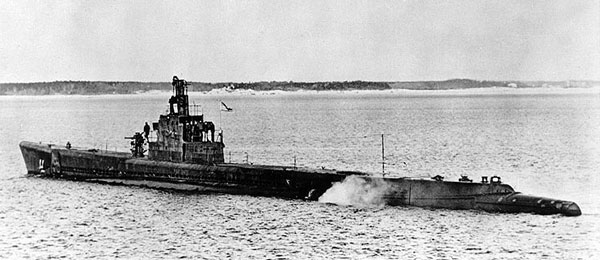CDR J.F. Walling
Commanding Officer
SNOOK (Cdr. J.F. Walling) departed
In accordance with her orders, weather reports were received daily from SNOOK as she proceeded westward until April 1, when she was told to discontinue making them. On the same date, SNOOK was directed to proceed westward to join a coordinated attack group under Commander Cassedy in TIGRONE. BANG and BURRFISH had already been assigned lifeguard stations and were not available for the attack group as originally planned.
Although the last message received from SNOOK by shore bases was on 1 April, TIGRONE was in contact with her until 8 April, at which time SNOOK’s position was 18-40N, 111-39E. On April 9, TIGRONE was unable to raise her by radio, nor was she ever able to afterwards. TIGRONE being unable to raise her may be explained by the fact that on 10 April SNOOK was directed to move eastward towards
Japanese antisubmarine attack reports available at this time give no indication of an attack which might have been on SNOOK. There were mines in the vicinity of Sakeshima Gunto, but SNOOK had information on these which had been gained from captured enemy documents. It is improbable that she would have gone into the minefields unless intentionally to rescue a downed aviator. She was not asked to penetrate any minefield in effecting any rescue.
A number of enemy submarine contacts were reported in the vicinity of SNOOK’s lifeguard station during the period in which her loss occurred. During April and May 1945, five Japanese submarines were sunk in the Nansei Shoto chain. The circumstances surrounding SNOOK’s loss suggest the possibility that one of these lost submarines may have torpedoed her while she was surfaced during her lifeguarding duties and it was not reported. It is known that such tactics were suggested to Japanese submarine commanders by their superiors.
No attacks had been reported by SNOOK prior to her loss on this patrol. She was, however, responsible for sinking 22 enemy ships, totaling 123,600 tons and damaging 10 ships, for 63,200 tons, on her eight patrols prior to her loss. Her first patrol was from mid-April to the latter part of May 1943, along the
SNOOK went to the

